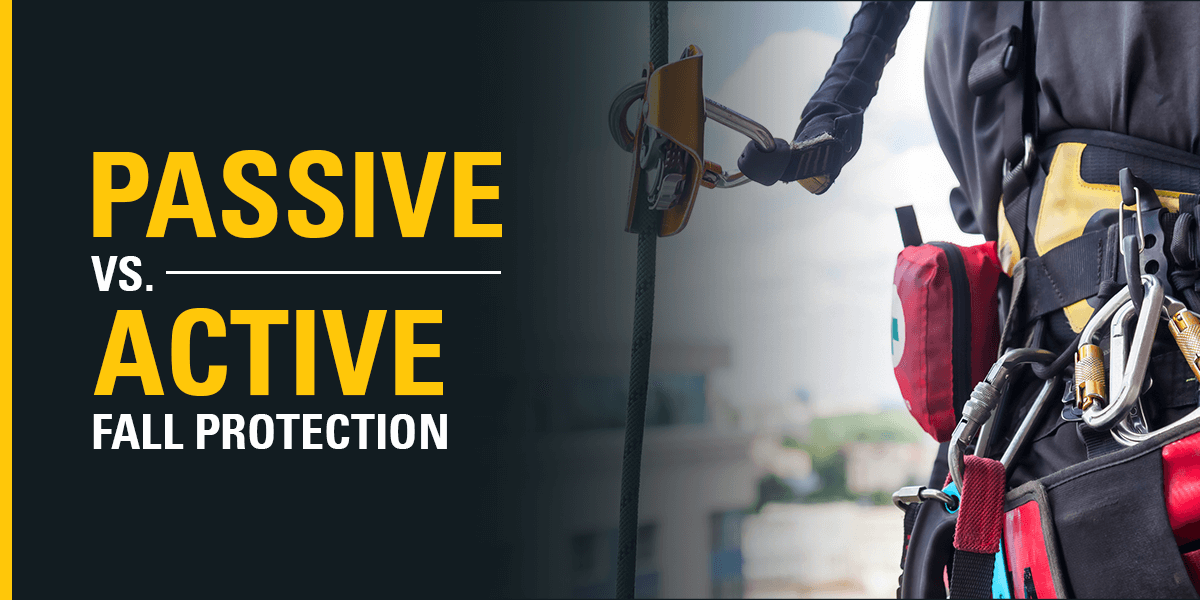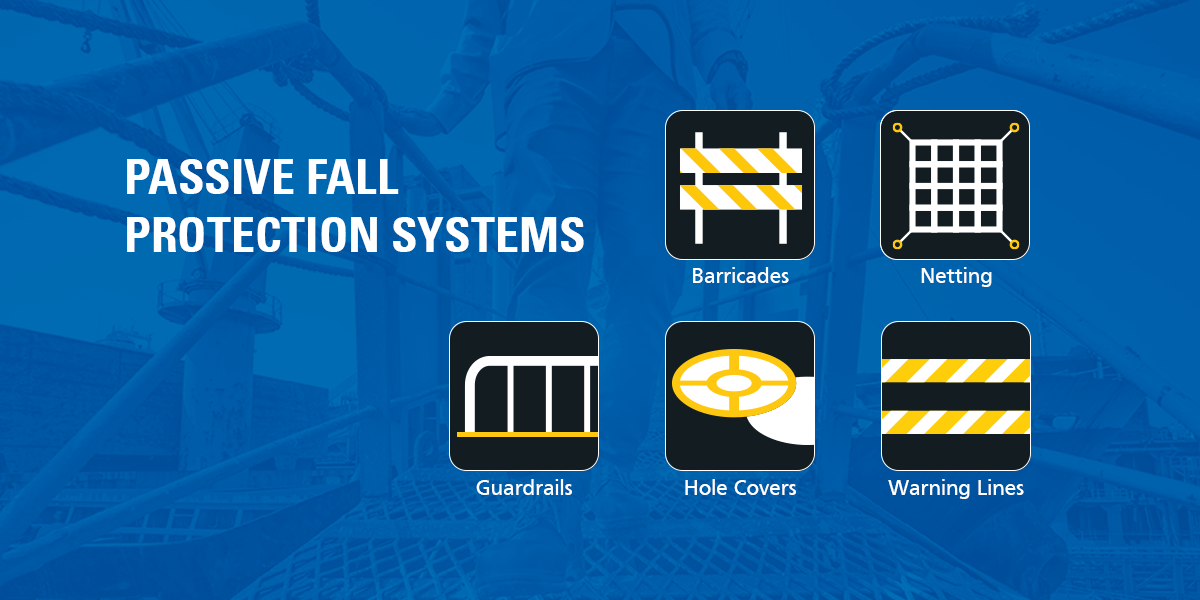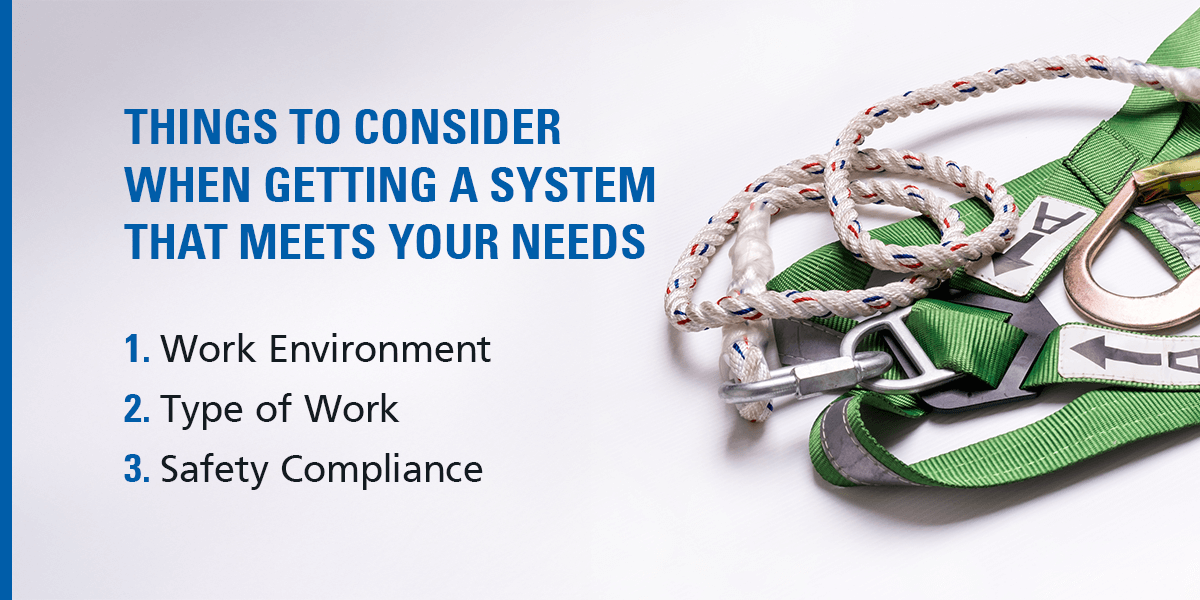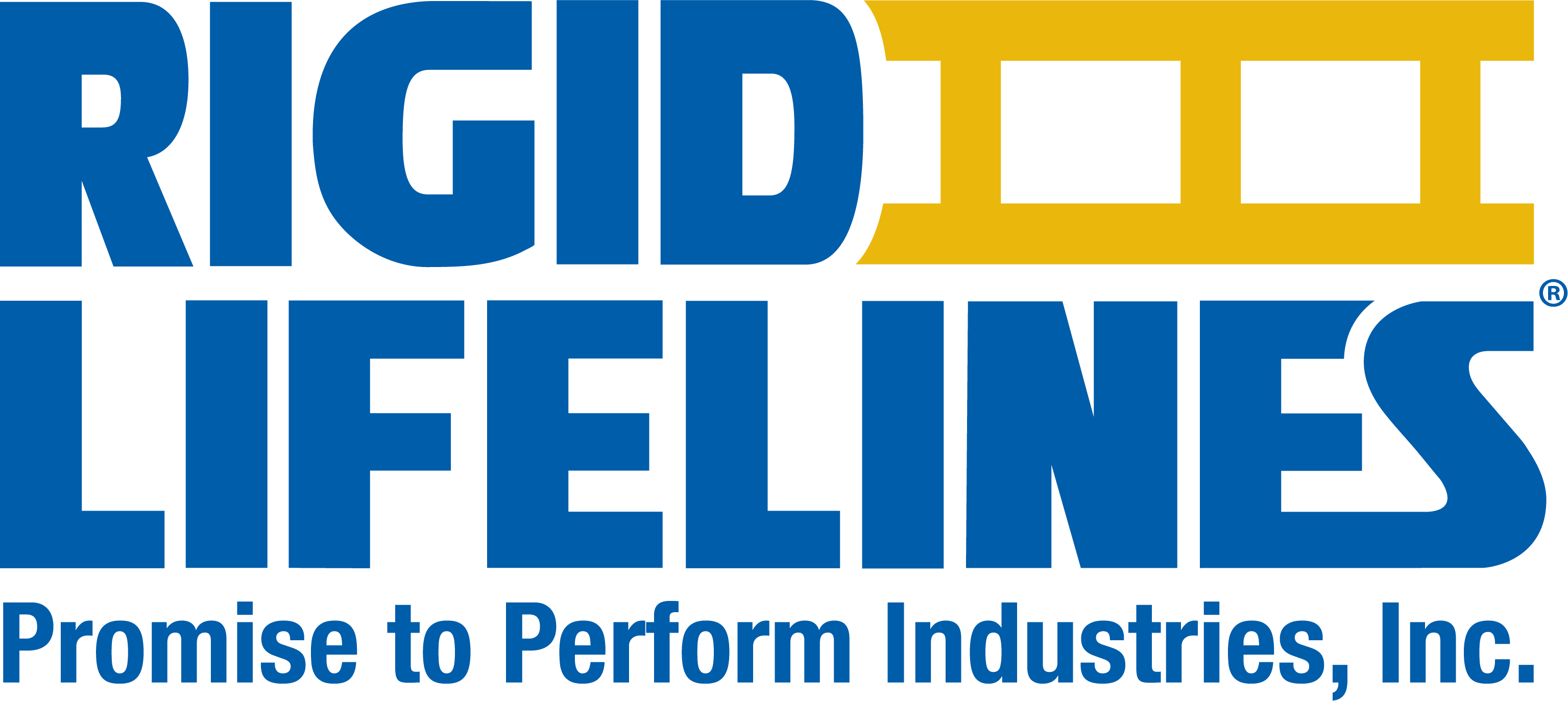
Passive vs. Active Fall Protection
April 17, 2025
Falls are serious hazards, especially in environments where workers perform their duties at elevated heights. In 2023, falls accounted for 21% of all preventable injury-related deaths and 31% of all nonfatal injuries. For industries like construction, where workers are often required to work from a certain height, fall protection systems are vital pieces of safety equipment designed to protect workers.
There are two categories of fall protection systems. This guide highlights the differences between the two approaches.
What Is Passive Fall Protection?

As the name suggests, passive fall protection systems are protective measures that are fixed in place and don’t require human interaction to serve their purpose. These systems are not compatible with personal protective equipment and usually serve as a second line of defense due to their less effective protective capabilities. Here are some common examples of passive fall protection systems:
- Barricades
- Netting
- Guardrails (fixed and freestanding)
- Hole covers
- Warning lines
What Is Active Fall Protection?
Active fall protection systems tend to be mobile and adaptable. They require the use of special equipment and worker participation. There are two types of active fall protection systems — fall arrest systems and fall restraint systems. All active fall protection systems have one thing in common. They secure a harnessed worker to an anchor point with a lanyard. Here’s a breakdown of the two types:
- Fall restraint systems: This type of active fall protection system typically uses a fixed-length lanyard (or dog leash) to keep a worker’s center of gravity from going over the leading edge of a fall hazard.
- Fall arrest systems: These incorporate various lanyard types, such as self-retracting lifelines (SRLs) and rip stitch lanyards, all designed to prevent a falling worker from hitting a lower surface.
Active fall protection measures include but are not limited to immovable point systems, vertical fall protection, and horizontal fall protection. Each type of active fall protection has specific advantages. Here are examples of active fall protection measures and their ideal applications:
- Immovable point system: An ideal application would be a high-rise window cleaning operation where overhead fall protection is not feasible.
- Vertical fall protection system: A perfect setting would be an unprotected radio tower.
- Horizontal system: An ideal setting would be a large industrial workspace with a strong overhead support structure.
Active systems, in particular fall arrest systems, are comprised of critical working parts, including the anchorage, full-body harness, lanyard, and connectors. A fall arrest system is not complete unless all four of these parts are included and are properly used.
Active vs. Passive Fall Protection: Key Differences
The main difference between passive and active fall protection approaches lies in how they are used. Here is a table highlighting the key differences.
| Passive fall protection | Active fall protection |
|---|---|
| Stationary systems that prevent falls through physical barriers | Dynamic systems that adapt to worker movement to prevent or arrest falls |
| Systems don’t require user interaction to offer protection | Require active participation and proper use of equipment |
| Don’t require training to use | Proper training is crucial for safe use |
| Prevent falls from occuring | Prevent falls or protect falling workers |
How to Choose the Right Fall Protection System

Selecting the right fall protection system is a crucial decision with implications like worker safety and compliance. There are many things to consider when getting a system that meets your needs:
- Work environment: The work environment and the fall hazards present will determine the appropriate fall protection approach. Consider factors like the elevation of work location, surface conditions, obstacles, and weather. For example, while passive measures like barricades are sometimes effective for elevated platforms, a slippery surface or windy conditions may necessitate active measures.
- Type of work: The type of work or activities will impact your choice. For fixed work areas, a passive system like guardrails could provide a solution. However, if the activity requires frequent worker movement around the site, you’ll likely need active measures like personal fall restraints.
- Safety compliance: State, local, and industry-specific regulations regarding worker safety may affect your choice of fall protection. For example, you must ensure that the system you choose meets the fall protection requirements outlined by the Occupational Safety and Health Administration (OSHA).
Whether your worksite integrates passive or active fall protection systems, proper worker training, system maintenance, and regular inspection of all fall protection system equipment are essential elements in maximizing the effectiveness of a system. Frequently, systems are available in kit form and ready to install.
Some manufacturers provide customers with the opportunity to order custom-fabricated systems to meet the specific fall protection needs of their facility. Whatever your needs may be, be sure to select the fall protection system that maximizes workplace productivity while minimizing both risk and cost.
Explore Fall Protection Systems From Rigid Lifelines
Fall protection systems are necessary to help ensure worker safety in job settings where there’s a risk of falling. With the proper understanding of fall protection, you can create a much safer work environment. At Rigid Lifelines, we manufacture well-tested and compliant fall protection systems, ranging from mobile to permanent structures.
We rely on years of industry expertise and cutting-edge technologies to create safer solutions for at-height jobs. Find a system that works for you using our system selector tool, and contact a Rigid Lifelines representative in your location to discuss your project!
Categories
Share this post
Let us help you
Contact us today to find the perfect product fit for your job
